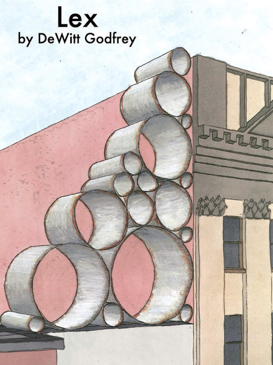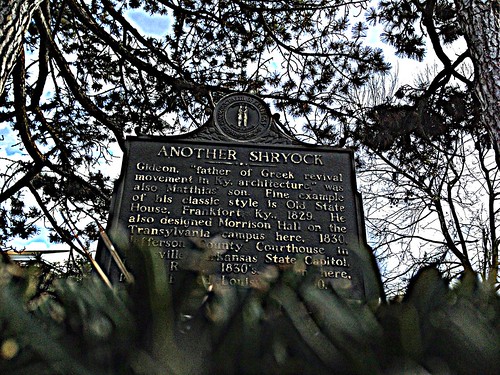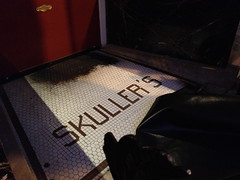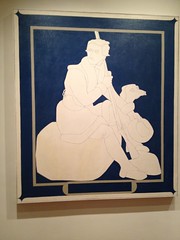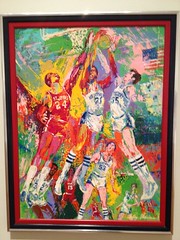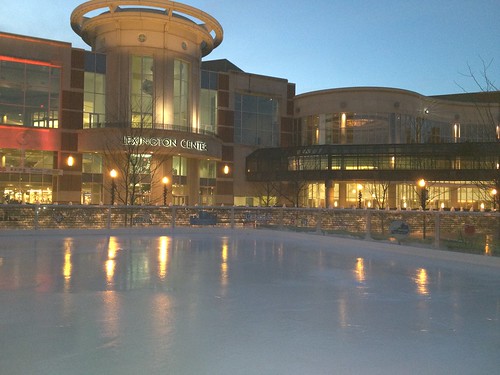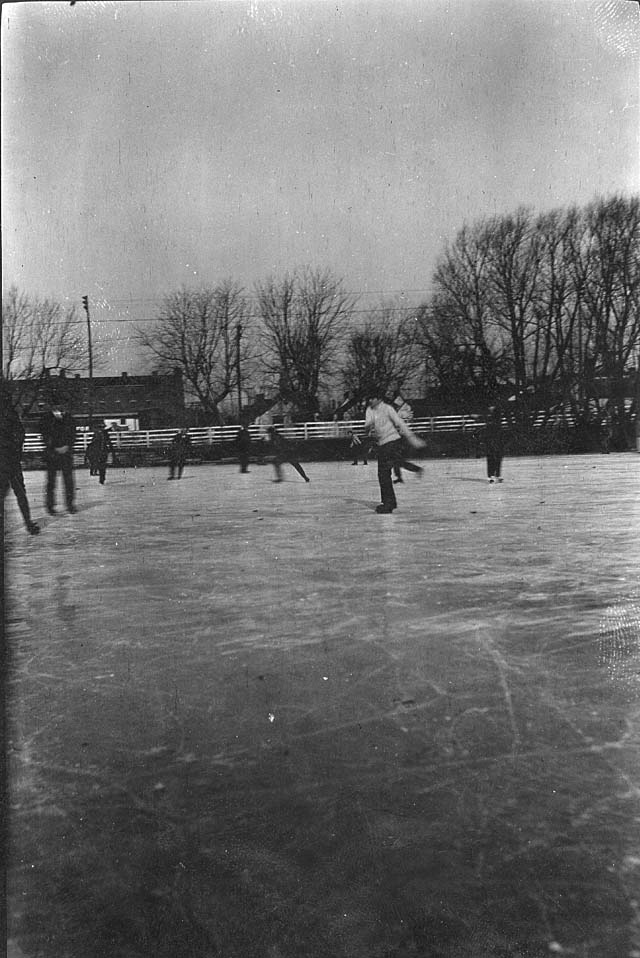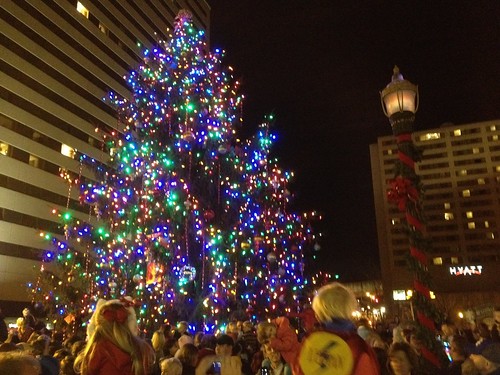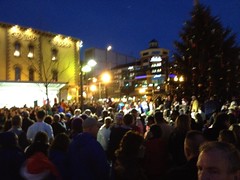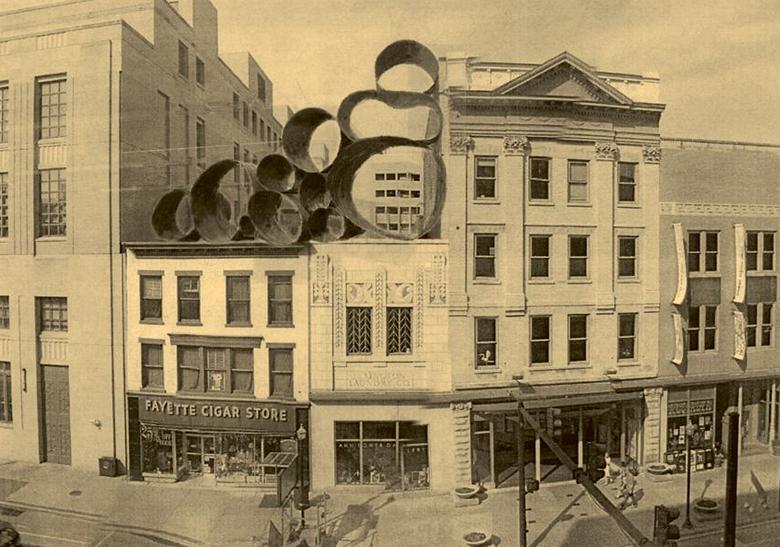 |
| Early Rendering of “Lex” atop the Downtown Arts Center – Lexington, Ky. |
 |
| Scaled Back Design of “Lex” |
Sculptor Dewitt Godfrey of upstate New York has designed Lex – a fixture of various shapes and sizes of steel tubes to be stacked atop the Lexington Laundry Company building at 141 East Main Street. Godfrey is well-known for his abstract designs featuring weathered steel tubes. His work is being brought to Lexington as a commissioned work by LexArts and Leadership Lexington‘s 2010 Class.
The original design, pictured above, would have spanned both Laundry Building and its neighbor, 137 East Main (the Fayette Cigar Store). Without the support of all involved, the project was scaled back and will only rest atop Lexington Laundry.
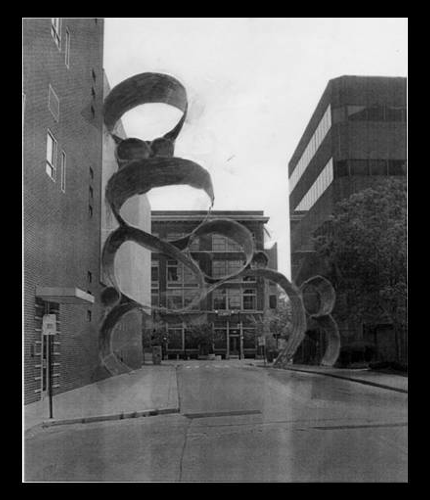 |
| Steel Tube Possibilities Photo: LexArts |
The scaled-back design is far more conservative than the original renderings. Also quite different from other Godfrey works is that Lex will be placed three stories above ground meaning that the art will have no pedestrian interaction. Godfrey did design some versions of Lex that would have been accessible – consider the interpretation at right which would have allowed both pedestrian and vehicular traffic through the steel tubes.
The total fixture is expected to weigh 11, 900 pounds. Spanning 18′ 8″ over the art center, the Lex will reach over 27 feet into the air. It will contain 17 cylinders with the largest having a diameter of ten feet.
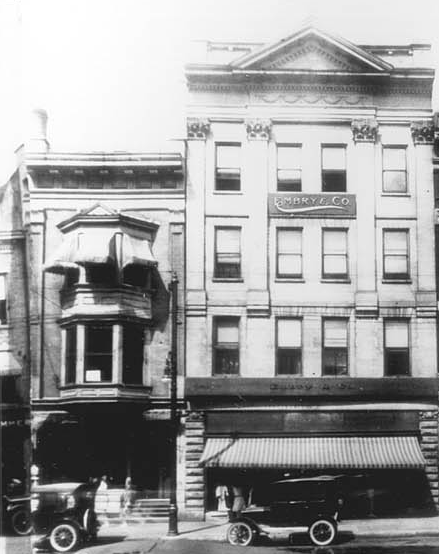 |
| Asa C. Chinn Collection, ca. 1920-1921 Photo Source: KYVL-KDL |
Before it was home to the Lexington Laundry Company (built 1929), the site featured a slightly taller structure that wouldn’t have left enough room for 27 feet of aerial art about its top. The unique façade of the Laundry Company’s predecessor is missed but Godfrey’s art form will be another major transformation of the location. The 1929 structure is considered by the US Department of the Interior to be Lexington’s finest example of art deco architecture with the façade “composed of wheat-toned glazed tile highlighted by stylized floral patterns.”
Those commissioning the work did so in a massive call for public art that will hopefully grace other community spots in the coming years. With 126 applications and 14 finalists, a selection of five proposals were commissioned. This Godfrey piece will be the first to appear in Lexington, though information about other commissioned proposals is available.
Next week, on January 11, the proposed art work will go before the Courthouse Area Design Review Board for approval. Once approved, work can begin on putting in place this project funded in part by the National Endowment for the Arts which will provide another fixture of permanent public art in downtown Lexington.
UPDATE: The CADRB unanimously approved this project on January 11, 2012. To the left is the most recent (and color!) artists rendering of what we’ll soon see!
Sources: Artist Website; BizLex; CADRB Application; Downtown Building Inventory; Herald-Leader; National Park Service.
Correction: The Lexington Streetsweeper pointed out that an earlier version of this story confused and combined into one the Laundry Company building and its predecessor in location. Chinn’s photos were taken in 1920-1921 and the Laundry Company building wasn’t built until ca. 1929. Thanks for the catch!

